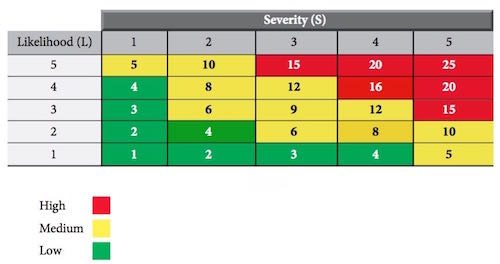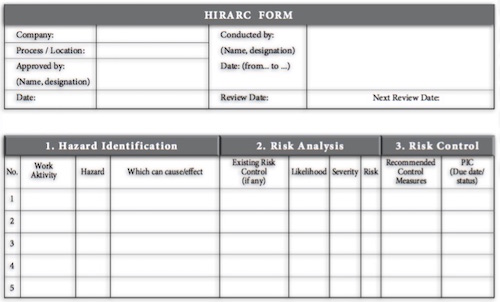Anyone who has to work in a high place should be able to identify the hazards related to working at height. Besides, understand safe work methods using ladders and scaffoldings also important if needed.
During working at height, the physical hazards may exist like slippery surface, falling objects, narrow and uneven platform, sharp objects, faulty ladder, unstable scaffolding etc. Besides, environmental hazards may exist like rain, strong winds, lightning, fog, hot weather etc. In addition, biological hazards may come from poisonous insect and poisonous animal (snake etc.).
There are some ladder accident associated with the use of ladders;
- Reaching too far to side
- Facing away from ladder while walking down
- Ladder slips outwards at the bottom
- Ladder slips sideways at the top
- Broken rungs or stile Ladder
So that use a suitable ladder and accordingly base on the existing hazards;
- Use fiberglass/wood ladder for working with electricity
- Stand on a firm, even & solid base
- Set at correct angle i.e, 1 ft out for every 4 ft height (1:4)
- Ladder must extend three feet above the roof
- Secure the top of the ladder while an assistant holds the ladder on the ground
- Install anti-slip shoe at the base of the ladder
- Only one person climbing the ladder at a time
- A frame type ladders somebody to hold the ladder at all times
- Face the ladder when climbing or descending
- Fully open the stepladder before using it
- Ensure the ladder lock is secure
- Hold the rungs while climbing
Safe Use Of Ladder;
- Do not carry tools or materials using 1 hand while ascending or descending
- Carry tools in sling bags or tool belts
- Ensure both hand are free
- Maintain three (3) point contact (2 hands and 1 foot, or 2 feet and hand) the ladder instead of over reaching
- Carry ladders with the front end elevated
Remember!!..
DO NOT Climb wet or greasy ladders
DO NOT Place the ladder near to electric cables or suspended objects
DO NOT Wedge one side of the ladder if ground is uneven
DO NOT Use ladders have fear of heights (alto phobia)
DO NOT Use ladders near doors and staircases
Maintenance of Ladders;
- Check and maintain regularly to prevent use of faulty ladders
- Store ladders at a proper place i e. store room
- Do not hang the ladders by its rung or from one stile
SCAFFOLDING SAFETY MEASURES
- Erect and dismantle scaffolding under supervision of competent person
- Common type of scaffolding is from aluminium type and compliance with "BS 1139" standard.
- Scaffolds must have base plates, even when setting on a concrete floor
- Not using base plates can damage the scaffold leg
- EEF Scaffolds should never be set on bricks, masonry blocks, etc
- Inspect regularly especially after bad weathe
- Alteration must be duly authorized
- Put back the unutilised component in its place
- Never overload the scaffold
- Walkways free from obstruction and slippery surfaces
- Put up barricades and display safety signages
- Take precautions when working near electric
- Sign (Red Scaff Tag) to be posted at incomplete or unsafe scaffolding. Example Caution! Incomplete Scaffold! etc.
PROTECTION SYSTEM
Install guard-rails and toe boards at open edges of floors and working platforms to prevent workers from falling.
FALL PROTECTION SYSTEM
Individual fall arrest systems designed to arrest an accidental fall. The basic system consist of the following: Full body harness Life line Lanyard (single or double)
CONCLUSION
Working with correct and safe ladder and scaffolding can prevent incidents at workplace.












